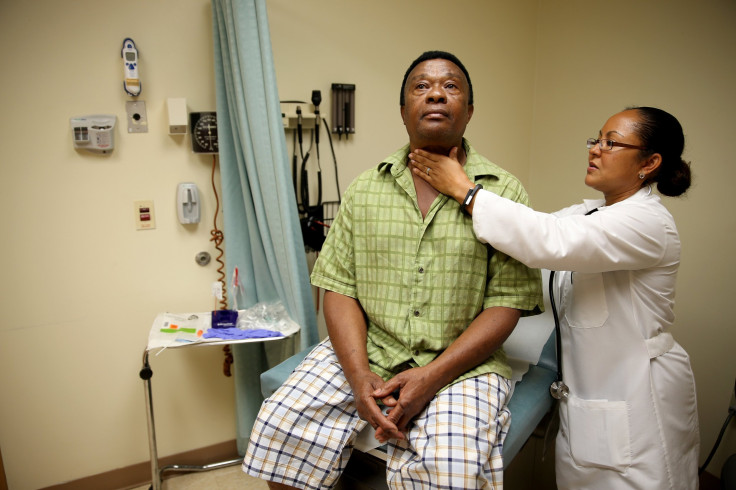Healthcare Costs Are Rising Steadily, But Is Medical Care Getting Better?

Every year, health insurance premiums seem to tick — well, sometimes leap — upward. The amount differs for every person, but one lament is common: When will I get what I’m paying for?
New projections from the Health Research Institute at PricewaterhouseCoopers (PwC) offer some reason for optimism when it comes to the increase in healthcare costs: Medical costs in 2017 will grow by 6.5 percent, roughly the same rate at which they rose in the prior three years. After years of accelerating cost increases, this plateau represents an improvement. But growth in medical costs still substantially outpaces the consumer price index, which for the year ended May was 1 percent. Meanwhile, larger questions surrounding whether people will become healthier and receive better care for their money remain unanswered.
“It’s going to come back to anyone who uses healthcare,” Barbara Gniewek, a principal at PwC in New York, said of the cost increases. Even those who don’t use healthcare still have to buy insurance, she said, and “if you’re a healthy employee ... that’s going to cost you more, too.”
In 2014, the United States spent $3 trillion on healthcare. That amount breaks down to $9,523 per person or 17.5 percent of the economy. The Centers for Medicare and Medicaid Services (CMS) projects that by 2024, healthcare spending will constitute nearly one fifth of the economy.
In an effort to rein in rising costs, the government and the private sector, including employers and insurers, are attempting to overhaul the healthcare sector. Some of these changes, but not all, are sanctioned by the Affordable Care Act, landmark legislation passed in 2010.
CMS is experimenting with new payment models, for instance, that reward doctors financially for the quality, instead of the quantity, of care they give patients. Employers have increasingly begun offering high-deductible insurance plans that shift a greater burden of healthcare costs to patients.
These changes have helped steady the rate of medical cost increases, also known as trend. In 2010 and 2011, annual medical cost trends were at 9 percent, before dropping to 8.5 percent in 2012 and 7.5 percent in 2013, according to PwC's report. By 2014, they had fallen to 6.5 percent, and aside from a slight uptick to 6.8 percent in 2015, have remained steady ever since.
“The fact that trends are not spiking up is good,” said Gniewek. But, she warned, “there’s still enough that’s going to cause employers to pause and figure out more efficient ways to deliver healthcare benefits.”
To this end, one tactic employers frequently use is cost shifting. Behind it is the idea that the more employees must pay for care, the more judiciously they’ll spend and consider whether an ailment really warrants a trip to the doctor.
The majority of American adults — 56 percent in 2014 — still get their health insurance through their employers, although that proportion has shrunk from 67 percent in 1999.
Other research corroborates the implications of PwC’s report that ordinary people aren't necessarily feeling the slowdown in medical cost trends.
“In recent years, the growth in overall healthcare costs has slowed dramatically,” wrote researchers at the liberal-leaning Center for American Progress in its March 2015 report “The Great Cost Shift.”
But for those who get insurance through their employers, “this slowdown is illusory,” the report added. From 2008 to 2013, the growth rate of what these employees had to pay for coverage was more than double the average growth in healthcare spending by individuals overall.
These costs are significant. In 2016, the average cost of employer-sponsored healthcare for a family of four in the U.S. came to $25,826, according to the Milliman Medical Index. That amount is triple the $8,414 it was in 2001.
As medical spending increases, employees are absorbing a greater share of the cost than their employers.
“They increase deductibles, mostly, or increase copays, limit certain benefits, and pass along increases in employee contributions,” said Gniewek.
PwC's report highlighted several other key factors in healthcare that it said had had noticeable effects on medical cost trends.
One phenomenon pushing the growth rate upward is the rise of convenient care centers, like retail and urgent care clinics. People are more likely to seek medical care when it's more convenient, and the ability to get basic care, after work hours, without an appointment is simply driving people to do so.
That's not necessarily a bad thing, said Gniewek. In the short term, the convenience factor might drive up healthcare costs. But ultimately, “it should have longer term savings,” she said. “You're going to catch things early,” before they become medical catastrophes, she added.
Thanks to increased enforcement of mental health parity legislation, people are also gaining better access to mental healthcare and will continue to do so in 2017, according to PwC’s report. “As these changes go into effect, they will unlock pent-up demand,” it said. But like convenient care, the growing use of mental health services should work preventatively and reduce costs in the future, it added.
Tamping down growth were the increased use of high-performance networks, which cost less but give patients fewer doctors and hospitals to choose from, and a shift within pharmacy benefit managers to negotiate drug prices and lower spending on prescription medicines.
© Copyright IBTimes 2024. All rights reserved.




















